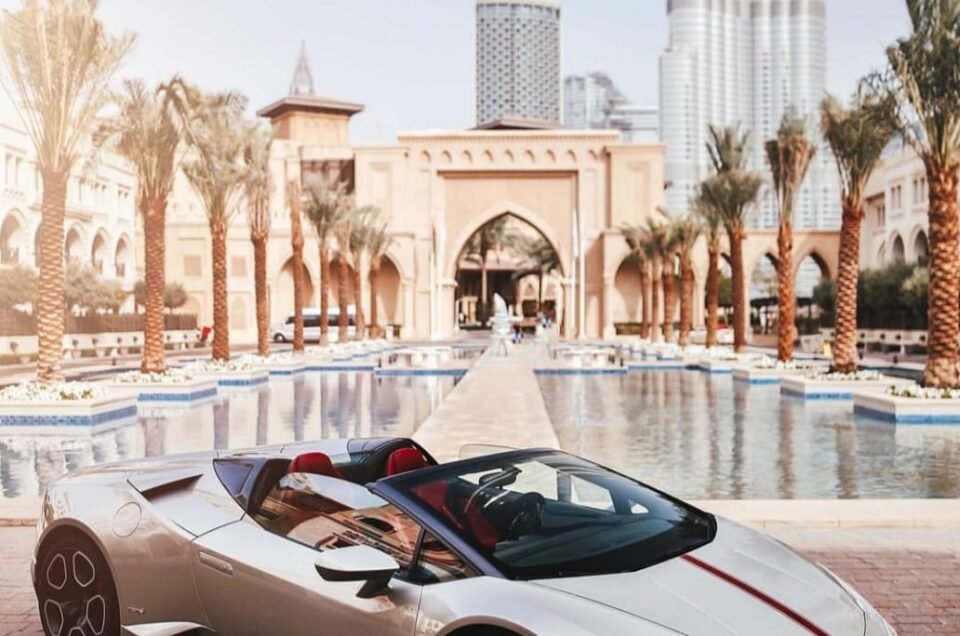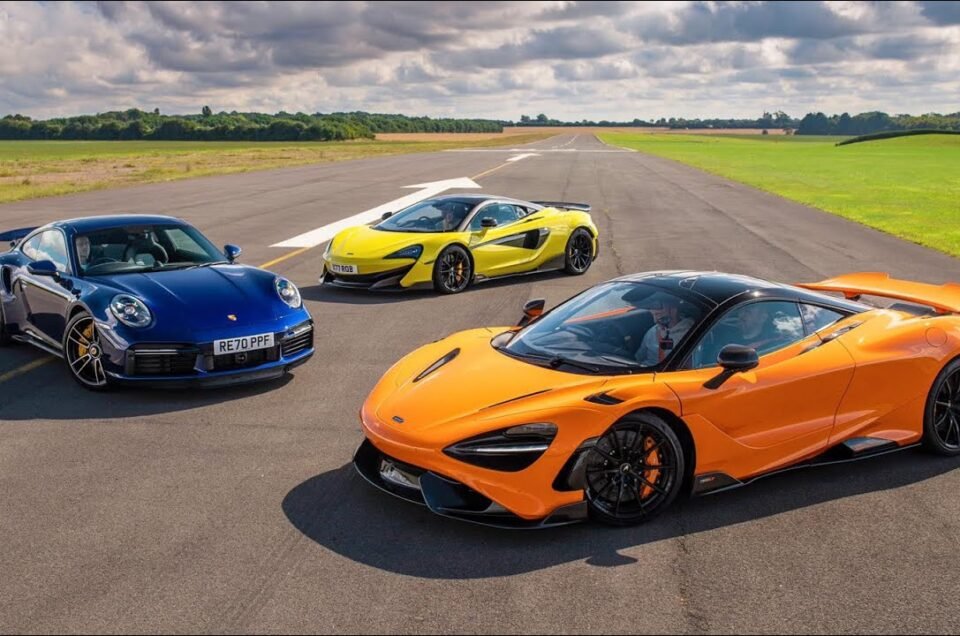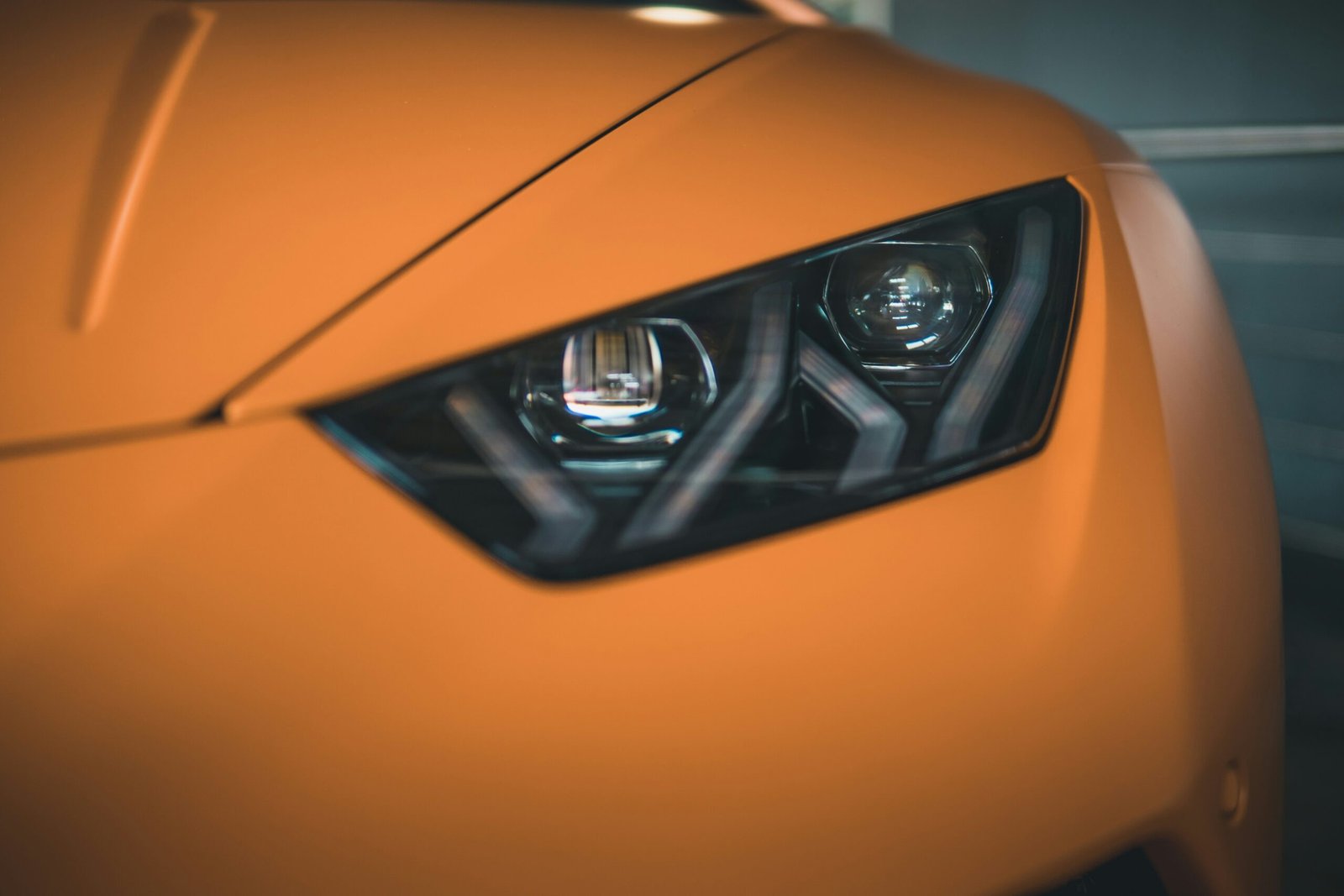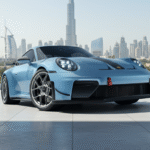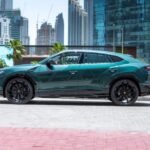Introduction to McLaren and Lamborghini
McLaren and Lamborghini are two of the most iconic names in the luxury automotive industry, each known for their high-performance vehicles and sleek, innovative designs. With rich histories that have shaped the supercar landscape, these brands have continually pushed the boundaries of automotive technology and performance.
McLaren, founded in 1963 by Bruce McLaren, originally started as a racing team before transitioning to road cars in the late 1980s. Known for its expertise in Formula 1, McLaren has leveraged its racing pedigree to engineer high-performance road cars that fuse cutting-edge technology with unparalleled driving experience. The brand’s mission revolves around creating the ultimate driver’s car, emphasizing lightweight construction, aerodynamic efficiency, and explosive power. McLaren’s target market includes enthusiasts and collectors who value precision engineering and track-inspired performance in their everyday driving.
On the other hand, Lamborghini’s history dates back to 1963 as well, initiated by Ferruccio Lamborghini with the intent of competing with established manufacturers like Ferrari. Lamborghini quickly gained recognition for its bold and aggressive designs, particularly with models such as the Miura and Countach. The brand has built a reputation for producing some of the most visually striking and powerful supercars in the world. Lamborghini’s mission centers on delivering unmatched performance and visceral driving experiences, appealing to those who seek both extravagance and engineering excellence. Its target market ranges from wealthy car aficionados to celebrities and those desiring a symbol of status and performance.
Over the years, both McLaren and Lamborghini have evolved significantly, adapting to changing market demands while maintaining their distinct brand identities. McLaren has continued to innovate with models like the 720S and the cutting-edge Artura hybrid, while Lamborghini has expanded its lineup with the addition of the Urus SUV, blending luxury and utility with supercar performance. These evolutions underscore the premium nature of both brands, setting the stage for a comprehensive comparison of their cost and value propositions.
Price Range of McLaren Models
McLaren has carved its niche in the luxury sports car market, appealing to discerning customers who prioritize performance and exclusivity. The price range for McLaren models reflects their commitment to delivering high-end automotive experiences, with entry-level models beginning at a moderate high price point and escalating significantly for their flagship vehicles.
The McLaren 570S, part of the Sports Series, represents the lower end of the McLaren price spectrum. The 570S starts at approximately $195,000. This model balances performance and practicality, offering a compelling option for those entering the McLaren ownership experience. Of course, additional customization options can increase this base price considerably, allowing owners to create a personalized sports car.
Moving up the range, the McLaren 720S, from the Super Series, commands a higher starting price of about $299,000. Considered a step up in performance and capability, the 720S justifies its cost with advanced engineering, superior speed, and cutting-edge technology. The customization options for the 720S are also extensive, often adding tens of thousands of dollars to the vehicle’s final price.
At the pinnacle of the McLaren model lineup is the McLaren Speedtail. This limited-production Hyper-GT has a staggering base price starting at around $2.25 million. The Speedtail is a testament to McLaren’s engineering prowess, blending unparalleled speed with futuristic design and technology. Being a hypercar, the Speedtail offers numerous bespoke customization options, which can significantly raise its price, tailored to the unique preferences of each owner.
The pricing structure of McLaren not only mirrors the brand’s market positioning but also delineates its consumer base. The lower-priced models appeal to sports car enthusiasts who are looking to enter the supercar domain, while the higher-end models attract ultra-wealthy individuals seeking exclusivity and the finest automotive technology. McLaren’s varied model range and corresponding prices ensure they stay competitive, while continuously pushing the boundaries of automotive performance and luxury.
Price Range of Lamborghini Models
When considering the cost spectrum for Lamborghini models, it is essential to analyze the primary offerings currently in the market: the Huracán, Aventador, and Urus. Each of these represents a pinnacle in automotive engineering and luxury, with pricing reflecting their exclusivity and the brand’s distinguished positioning.
Starting with the Lamborghini Huracán, the base price of this model is approximately $208,571. The Huracán is renowned for its agility and performance, powered by a naturally aspirated V10 engine. Depending on the customization options—such as bespoke exterior finishes, interior materials, performance upgrades, and advanced technology inclusions—the price can soar well beyond the base, potentially reaching above $300,000.
Next, the Lamborghini Aventador begins at a base price around $393,695. As the flagship model, the Aventador is equipped with a formidable V12 engine and boasts advanced aerodynamics, ensuring both speed and stability. Similar to the Huracán, the Aventador’s price can escalate considerably with custom and personalized features, often surpassing the $500,000 mark.
The Lamborghini Urus, Lamborghini’s foray into the luxury SUV market, has a base price starting at approximately $218,009. Despite being an SUV, it intriguingly integrates Lamborghini’s performance ethos, sporting a twin-turbo V8 engine. Due to the extensive customization options available, including high-end materials and exclusive interior add-ons, the Urus’s price can exceed $300,000 in some cases.
Such price points and the variability in costs depending on bespoke choices align perfectly with Lamborghini’s brand identity. The automaker’s target market predominantly includes high-net-worth individuals seeking unparalleled luxury, performance, and exclusivity. Lamborghini’s pricing, thus, reflects its commitment to providing a product that meets and exceeds the expectations associated with luxury, innovation, and relentless performance.
Factors Influencing the Prices
The pricing of McLaren and Lamborghini vehicles is a complex matrix influenced by a multitude of factors. Foremost among these is engineering excellence. Both brands invest heavily in advanced engineering techniques to craft high-performance vehicles, driving up costs but ensuring top-tier performance and reliability. Brand value also plays a significant role; the prestige associated with McLaren and Lamborghini commands a premium, heightening the allure and price of these luxury cars.
Materials used in the construction of these vehicles further impact their pricing. Lightweight, high-strength materials like carbon fiber and aluminum are commonly utilized to enhance performance and efficiency, but they contribute to elevated production costs. Additionally, the level of customization available can drastically alter a vehicle’s final price tag. Both McLaren and Lamborghini offer extensive bespoke options, allowing each vehicle to be tailor-made to the customer’s exact specifications. This bespoke nature not only enhances the exclusivity of the vehicle but also adds to its cost.
Market trends also significantly affect the pricing structure. The demand for high-performance luxury cars can ebb and flow with economic conditions. When the market conditions are favorable, and demand is high, prices can escalate. Conversely, during economic downturns, manufacturers may adjust prices to maintain sales momentum. Furthermore, production costs encompassing research and development, labor, and overheads are substantial for these sophisticated machines and directly impact the ultimate price.
Lastly, brand prestige cannot be underestimated. Both McLaren and Lamborghini have cultivated a storied heritage and a loyal customer base that values the brands not merely for their performance but also for their emblematic status. This prestige translates to a higher willingness to pay for the associated exclusivity, further driving up prices.
“`html
Comparison of Ownership Costs
When evaluating luxury sports cars such as McLaren and Lamborghini, the initial purchase price is just one factor among several to consider. The long-term ownership costs, which encompass maintenance, insurance, fuel, and depreciation, can influence the overall expense significantly.
A crucial aspect of ownership cost is maintenance. Both McLaren and Lamborghini vehicles require specialized servicing due to their advanced engineering and high-performance components. For example, routine maintenance for a McLaren, including services like oil changes and tire replacements, can cost between $2,500 and $5,000 annually. Lamborghini, on the other hand, can incur maintenance costs ranging from $3,000 to $7,000 per year. These figures can escalate with the vehicle’s age and usage frequency.
Insurance is another noteworthy expense for high-end sports cars. Premium rates for McLaren models typically range from $3,500 to $7,000 annually, depending on factors such as the driver’s age, location, and driving record. Lamborghini owners may face insurance costs between $4,000 and $10,000 per year, making it generally higher than McLaren.
The fuel efficiency of these high-performance vehicles is another consideration. McLaren models, known for their lightweight construction, often boast slightly better fuel economy compared to Lamborghini. While a McLaren might average 15-20 miles per gallon (MPG), a Lamborghini could range around 10-17 MPG. Over several years, these differences can add up to a significant cost discrepancy, considering the premium fuel required.
Depreciation, the loss in value over time, is also significant for luxury sports cars. McLarens typically depreciate at a rate of 20-30% in the first year and 50-60% after five years. Lamborghinis show a similar pattern, with first-year depreciation around 20-25% and 50-55% after five years. The precise depreciation rate can vary based on the model and market demand but generally follows this trend.
Considering these aspects, while the acquisition cost of a McLaren might initially seem competitive with a Lamborghini, the cumulative expenses for maintenance, insurance, fuel, and depreciation can vary. Detailed analysis and personal preferences ultimately guide whether a McLaren or a Lamborghini aligns better with the owner’s financial and lifestyle expectations.
“““html
Performance and Specifications
When evaluating the performance and specifications of McLaren and Lamborghini models, several critical factors must be considered. These luxury car manufacturers are well-known for their engineering excellence and cutting-edge technologies, which translate directly into their high-performance metrics.
Starting with engine types, McLaren primarily utilizes V8 twin-turbocharged engines in many of their models, such as the McLaren 720S, which generates up to 710 horsepower. On the other hand, Lamborghini features naturally aspirated V10 and V12 engines in models like the Lamborghini Huracán and Aventador, offering 602 and 730 horsepower respectively. The distinction in engine design and configuration not only influences performance outcomes but also provides a unique driving experience for enthusiasts.
Delving into top speeds, McLaren vehicles are renowned for their agility and swift acceleration. For instance, the McLaren 720S boasts a top speed of 212 mph, closely paralleling the Lamborghini Aventador’s 217 mph. These impressive figures demonstrate that both brands deliver exceptional speed; however, consumer preferences may sway based on brand loyalty and specific performance traits such as acceleration rates and handling capabilities.
Technological innovations also play a pivotal role in shaping the driving dynamics of these vehicles. McLaren’s integration of technologies like the Proactive Chassis Control II system enhances handling precision and comfort. Conversely, Lamborghini’s ALA (Aerodinamica Lamborghini Attiva) system provides active aerodynamic support, optimizing performance through downforce adjustments. These advancements underscore how each brand integrates technology to elevate driving experiences, thus justifying their pricing.
Performance aspects such as horsepower, top speeds, and technological innovations significantly impact consumer choices. While both McLaren and Lamborghini meet and surpass high-performance expectations, individual preferences regarding engine characteristics and technological features often guide purchasing decisions. Each brand offers a distinct set of advantages that cater to different aspects of high-performance driving, thereby validating the investment in either marque.
“`
Market Position and Consumer Perception
When examining the market positions of McLaren and Lamborghini, the difference in consumer perception becomes evident through various lenses. Both brands maintain a prestigious status in the luxury car market but cater to differing consumer profiles and hold unique standing in the automotive world.
McLaren, founded in 1963, has always been deeply rooted in motorsport, specifically Formula 1. This racing heritage significantly influences McLaren’s brand image, appealing to buyers who value track performance, cutting-edge technology, and engineering precision. The typical McLaren buyer is often a motorsport enthusiast or a discerning car collector seeking vehicles that deliver unparalleled driving experiences on both road and track. Brand loyalty amongst McLaren owners tends to be high, as the marque consistently melds race-derived technology with road car innovation.
Conversely, Lamborghini, established in 1963, stands as a symphony of Italian design, drama, and theatrical performance. The essence of Lamborghini resides in its bold, exotic styling, and the unmistakable roar of naturally aspirated engines. This brand attracts buyers who crave attention and desire a supercar that is not only fast but flamboyant. Typical Lamborghini buyers often include celebrities, high-net-worth individuals, and those seeking a statement of status and extravagance. Brand loyalty here is fueled by Lamborghini’s commitment to exceptional design and its storied history of opulent and audacious vehicles.
Exclusivity plays a critical role in the perceived value of both brands. While Lamborghini leans heavily on its heritage of building jaw-dropping, visually arresting machines, McLaren prides itself on its limited production runs and bespoke customizations, enhancing both exclusivity and allure. Flagship models such as McLaren’s P1 and Lamborghini’s Aventador epitomize each brand’s ethos, maximizing their respective appeals. Lamborghini’s marketing often spotlights its luxury lifestyle and cinematic allure, whereas McLaren emphasizes its technical prowess and performance credentials through strategic marketing campaigns.
Ultimately, the brand image and consumer perception of McLaren and Lamborghini significantly influence the perceived value and justification of their pricing, rendering both brands unique and desired within the luxury car market.
Which Is More Cost-Effective?
In assessing whether McLaren is cheaper than Lamborghini, the analysis reveals nuanced considerations. Initially, upfront costs for both brands depend on the specific model and configuration. Lamborghini, known for its high-performance supercars such as the Aventador and Huracán, generally commands a higher price tag. Meanwhile, McLaren offers competitive pricing on models like the 570S, which may appeal to those looking for high-speed thrills at a marginally lower initial investment.
A pivotal factor in this comparative analysis is the long-term ownership expense. Both brands share a reputation for demanding high maintenance costs, yet McLaren’s bespoke manufacturing techniques and cutting-edge technology can sometimes translate to higher service fees. Lamborghini’s wider availability of parts and service centers might provide a cost advantage concerning routine maintenance and repairs.
Additionally, performance preferences can influence cost-effectiveness. Drivers seeking blistering acceleration and nimble handling may gravitate towards McLaren’s engineering prowess encapsulated in models such as the 720S. Conversely, Lamborghini offers an unparalleled combination of raw power and iconic design, attributes that some buyers might find worth the premium price.
Therefore, determining which brand is ultimately more cost-effective depends on individual priorities. If the goal is to minimize initial expenditure without compromising on performance, McLaren might emerge as the favorable option. On the other hand, if long-term reliability and broader service network convenience are pivotal, Lamborghini could justify its higher initial cost through potentially lower long-term expenses.

